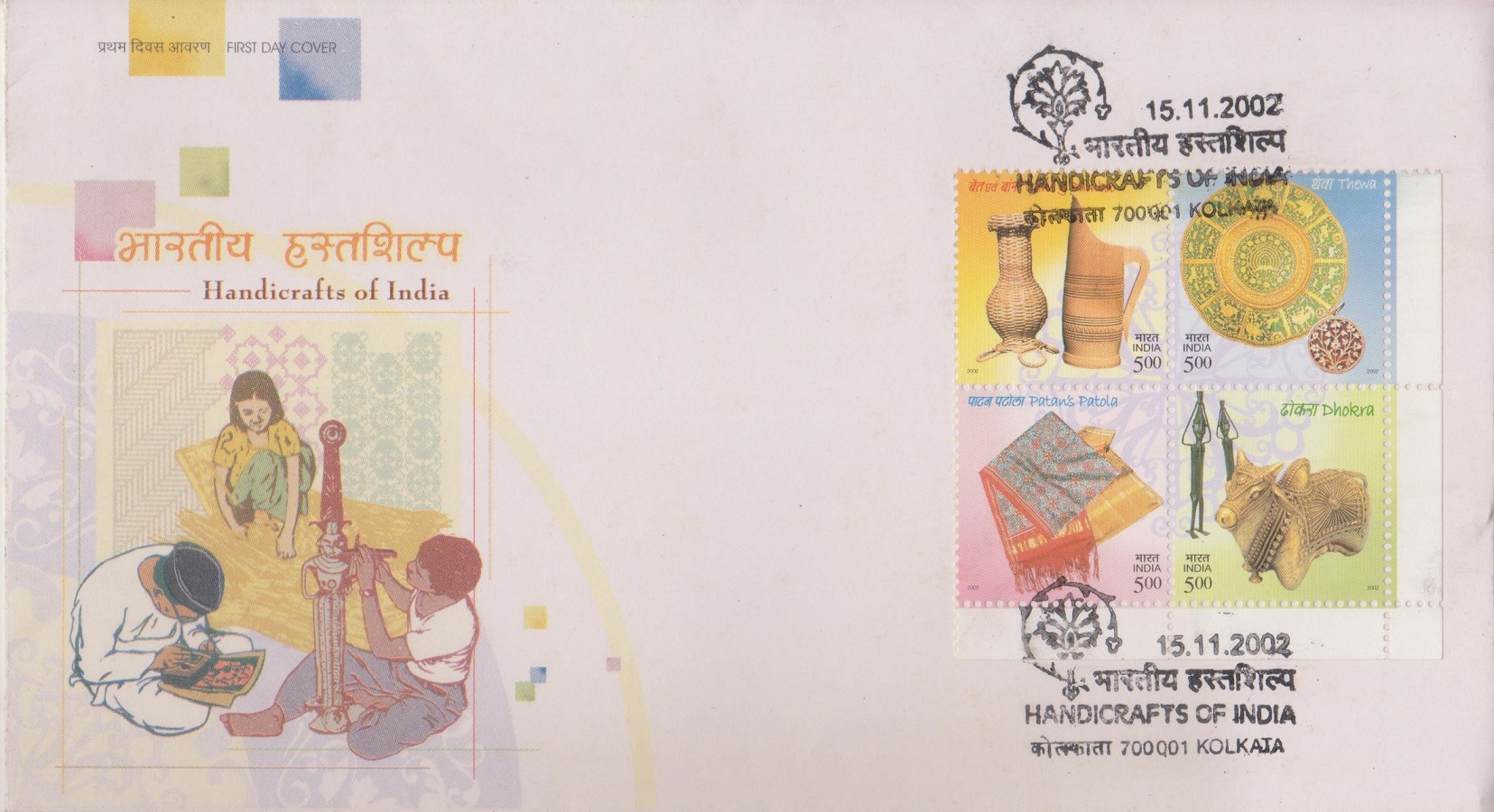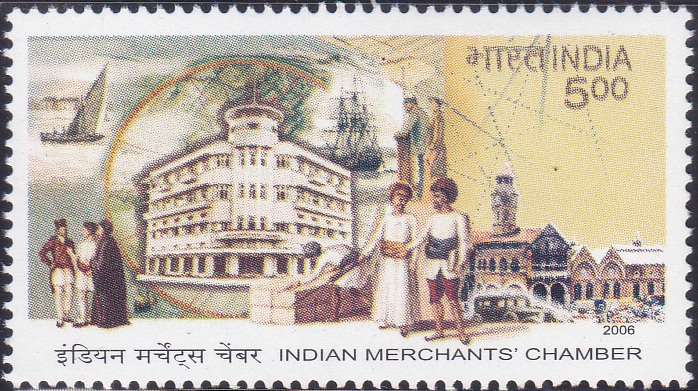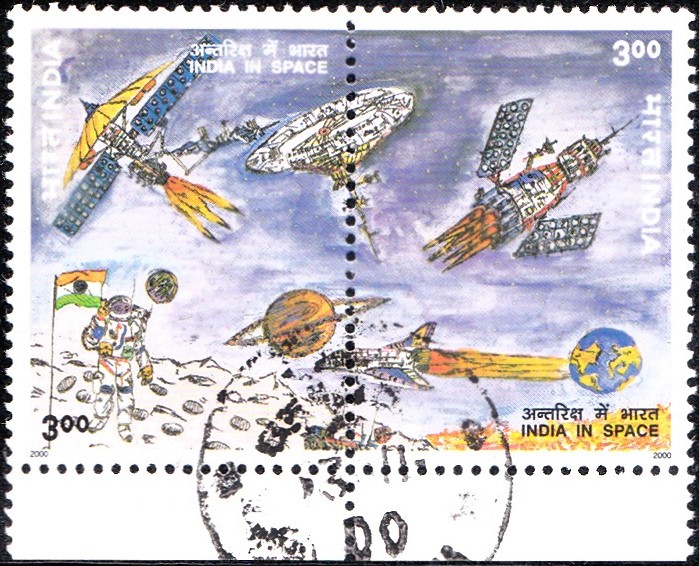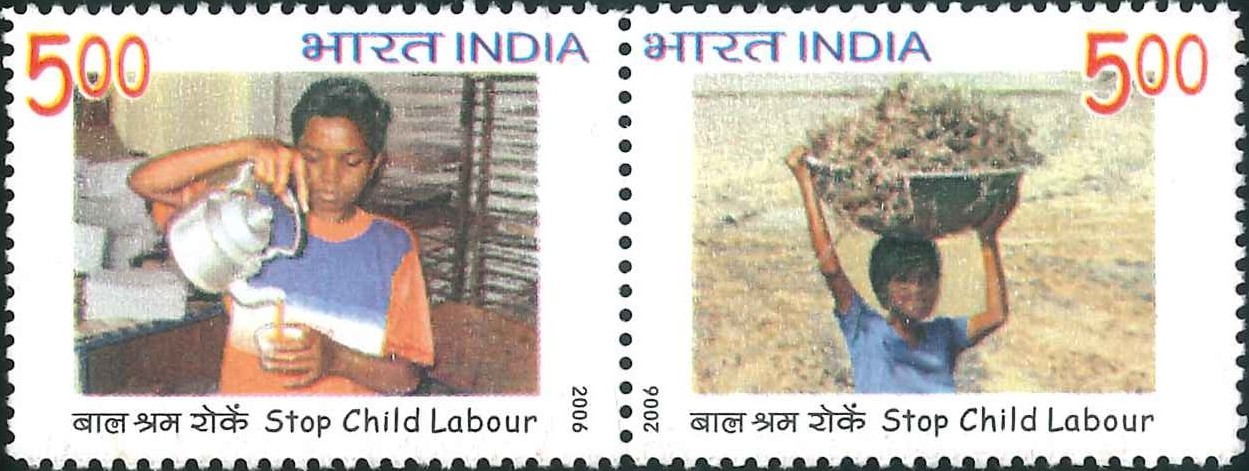
India on Stop Child Labour
Complete Set of 4 nos of commemorative postage stamp on the Stop Child Labor Campaign :
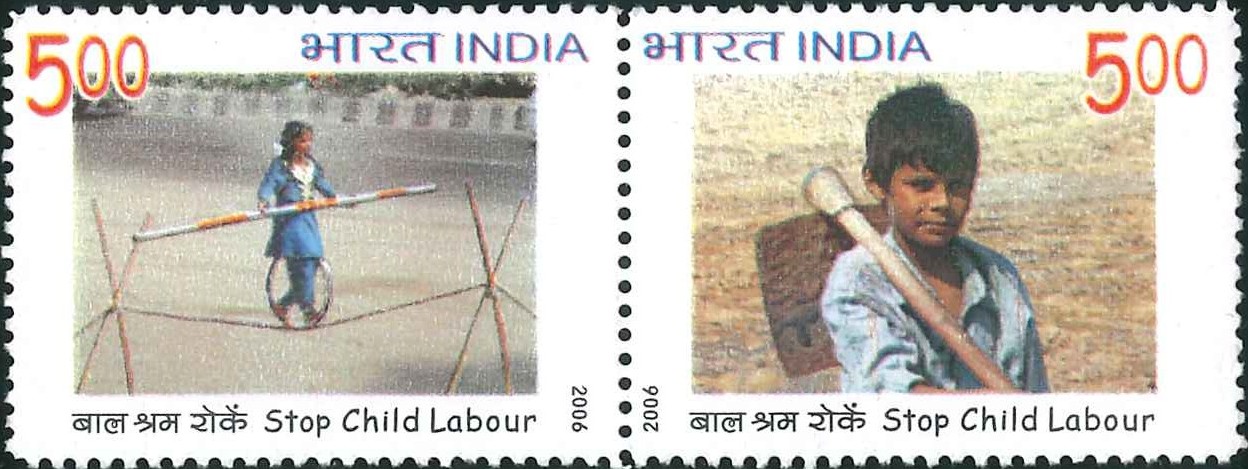
 Issued by India
Issued by India
Issued on Dec 26, 2006
Type : Se–tenant pair of 4 Stamps, Mint Condition
Colour : Multi Colour
Denomination : 500 Paise each
Stamps Printed : 1.6 Million
Printing Process : Wet–offset
Printer : India Security Press, Nashik
About :
- Child labour is especially prevalent in the developing countries, and in rural areas where enforcement of schooling and minimum age requirements for work becomes difficult. It is mainly poverty that drives parents to set their young children to work and support the family. In the process these working children become objects of extreme exploitation.
- India has all along followed a proactive policy with respect to the problem of child labour, and has stood for constitutional, statutory and developmental measures to combat child labour. Six ILO conventions relating to child labour have been ratified, three of these as early as the first quarter of this century.
- Being a party to the UN Declaration on the Rights of the Child 1959, India adopted the National Policy on Children in 1974. The policy reaffirmed the constitutional provisions and stated that “it shall be the policy of the State to provide adequate services to children, both before and after birth and through the period of growth to ensure their full physical, mental and social development. The State shall progressively increase the scope of such services so that within a reasonable time all children in the country enjoy optimum conditions for their balanced growth.”
- India‘s first act on the subject was the enactment of the Children (Pledging of Labor) Act of February 1933. This was followed by the Employment of Children Act in 1938. Subsequently, twelve additional legislations were passed that progressively extended legal protection to children. Provisions relating to child labour under various enactment such as the Factories Act, the Mines Act, the Plantation Labour Act etc. have concentrated on aspects such as reducing working hours, increasing minimum wage and prohibiting employment of children in occupations and processes detrimental to their health and development.
- The Child Labour (Prohibition & Regulation) Act 1986 of India was the culmination of efforts and ideas that emerged from the deliberations and recommendations of various committees on child labor. Significant among them are the National Commission on Labour (1966-1969), Gurupadaswamy Committee on Child Labour (1979), and the Sanat Mehta Committee (1984).
- The Act aims to prohibit the entry of children into hazardous occupations and to regulate the services of children in non-hazardous occupations. The Act, in particular,– bans the employment of children, i.e. those who have not completed their 14th year, in specified occupations and processes (Annexure-I).
Subscribe
Login
0 Comments





